The Vietnam Randall
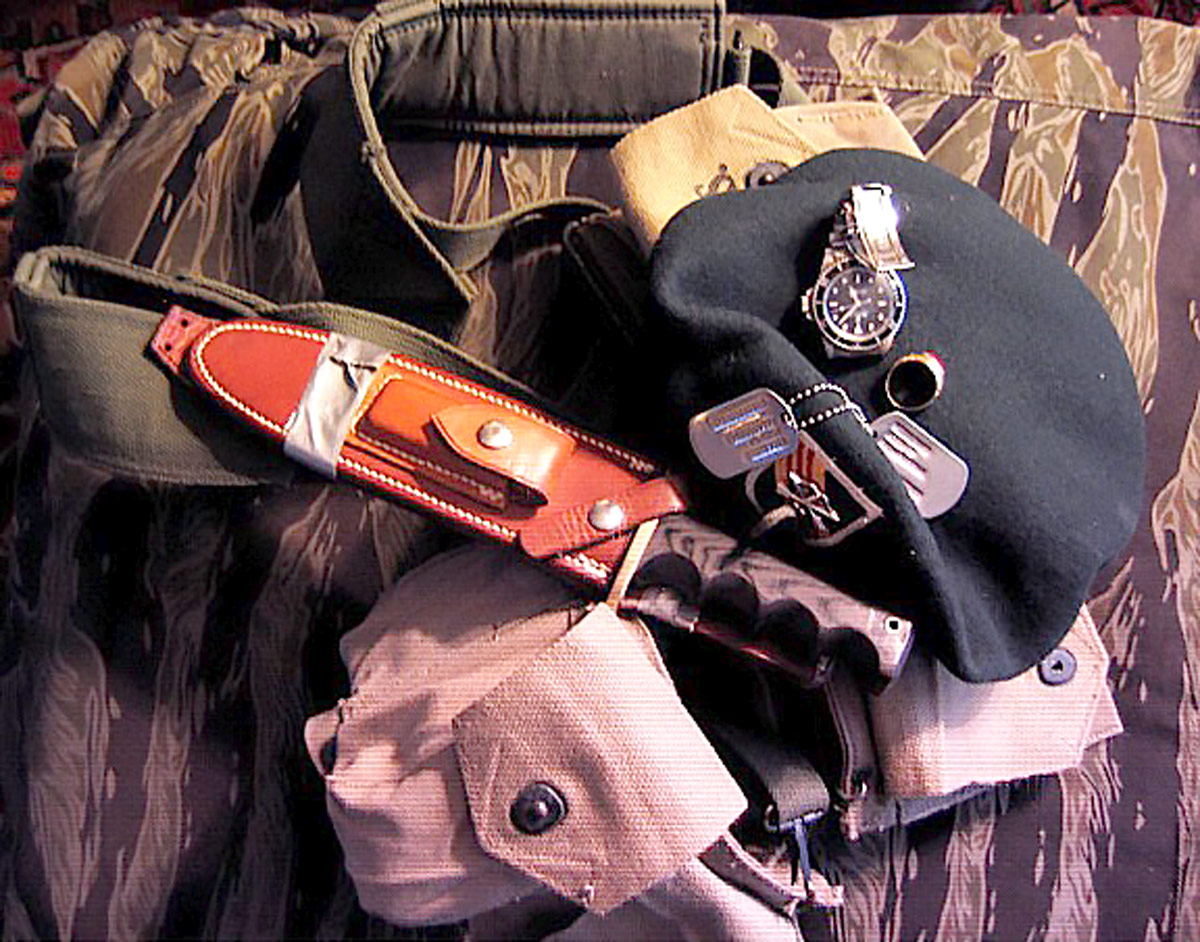
Vietnam—some Special Forces required equipment.
By Jack Williams
Originally published in the July 2014 Sentinel
It was during the Vietnam War that Special Forces became a legendary house-hold name forevermore tagged as “the Green Berets.”
Training, mind-set, attitude, personal flexibility, adaptability, were the key elements contributing to the successes of Special Forces personnel during Vietnam Era, 1961-1973. Today, the questions that are most common seem to concern the equipment that was used by SF during the war. The all-purpose answer of course is that we used whatever was available. However, regardless of the multiple roles SF filled in Vietnam, there were “must have” personal items. These included a BAR belt, a Rolex watch, a star sapphire ring, and … a Randall knife.
What is/was it about a Randall knife that caused so many troopers to lay out one-half a month’s pay for a heavy duty blade? The answer probably goes back to WWII when Mr. Bo Randall first began hand-making his highly prized combat blades. Perhaps because of the influence of the General “Slim-Jim” Gavin, CG of the 82nd Airborne who always carried a Randall, these knives rapidly became highly sought after especially by the airborne forces of the time.
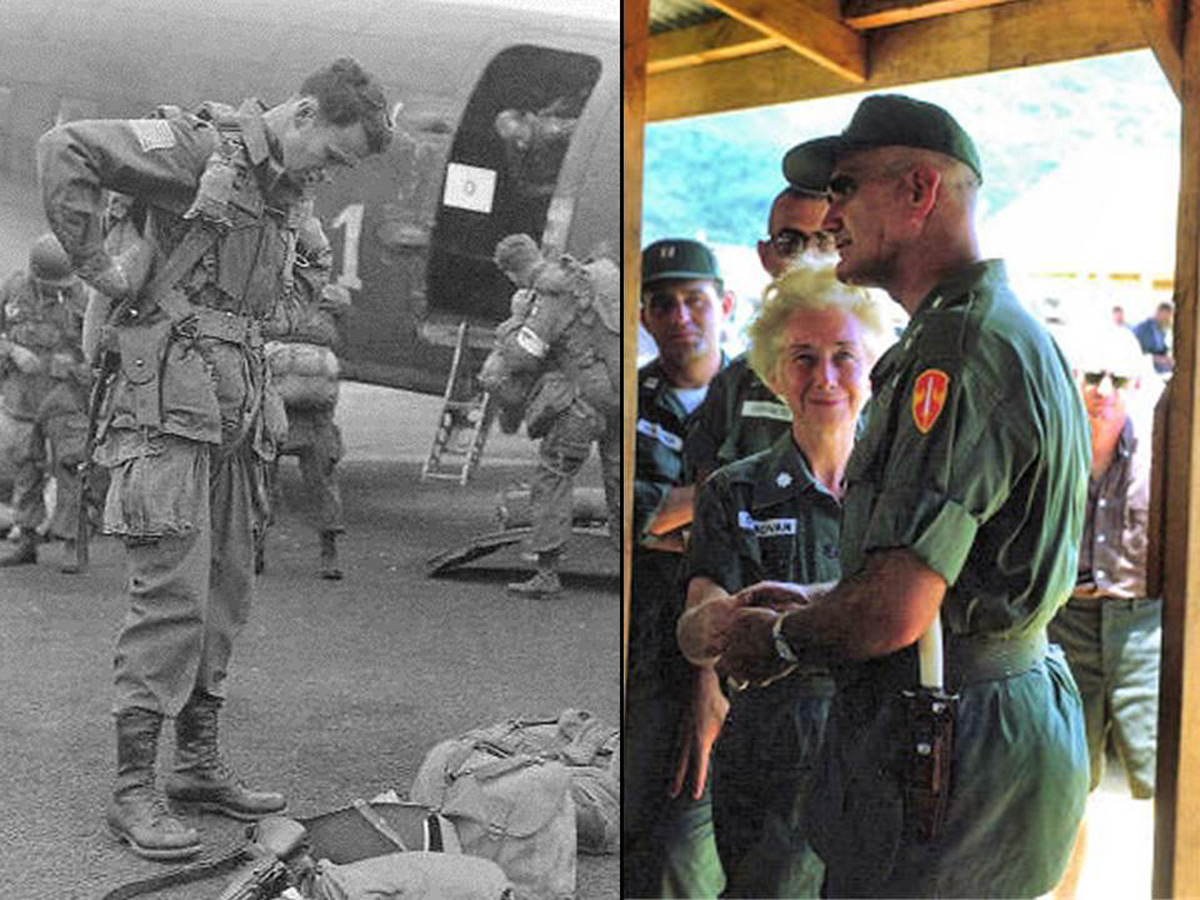
Left: Gen. Gavin suiting up for Market Garden wearing his Randall. Right: General Westmoreland wearing his Randall 1-6.
During the Korean War, Randall knives were widely popular and cemented their reputation as the premier military combat blade. Because of that reputation and their airborne pedigree, Randall knives immediately became the Special Forces tool of choice upon the creation of the embryonic 77th SF in the mid-late 50s.
By the beginning of the Vietnam era, a Randall was already an elite SF status symbol and had been carried by SF troopers around the world. As with the Rolex watch, a Randall said at a glance… “I appreciate and use only the best regardless of price …
I am Special Forces.” Thus Special Forces collectively had already made Randall their cult-knife when General Westmoreland, with his own personal airborne pedigree, began ubiquitously packing a Randall whenever he was in the field.
So exactly what type of Randall knives equipped the SF trooper in Vietnam? During the 1960s, Randall offered about 25 different models. But as far Vietnam was concerned; only five models provided the vast majority of the knives carried in country. Let’s examine these five models.
Randall Model 1 – All Purpose Fighting Knife (APFK), The Fighter
This was the original combat knife designed by Randall in early 1941. It was the knife carried by General Gavin in WWII and General Westmoreland in Vietnam. While the APFK design became more sophisticated over the years, the basic form remains the same today. This was by the most commonly ordered combat knife in Randall’s line in WWII and Korea … and remained highly sought after during Vietnam though its popularity was later eclipsed by the Models 14 and 18.
Generally the APFK came in three different lengths, 6-in, 7-in and 8-in blades. (For reference, all Randall knives are defined by two numbers, model and blade length. Therefore an APFK with an 8-in blade is commonly referred to as a “1-8”.) During the Vietnam era, APFKs were equipped with a wide variety of handles, guards, spacers, butt caps, etc., that are of importance to collectors. Here are several Vietnam era model 1s.
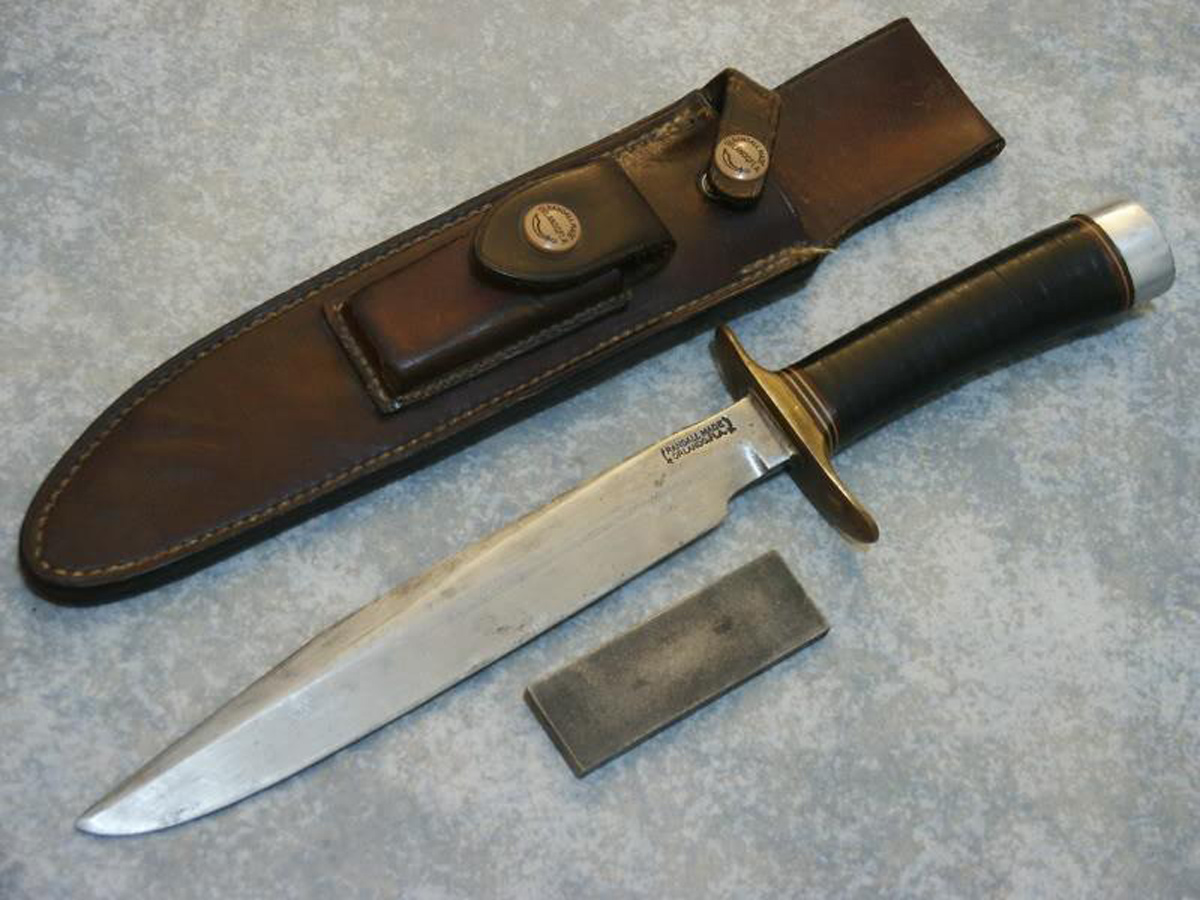
Model 1-8, carbon steel blade, early 1960s
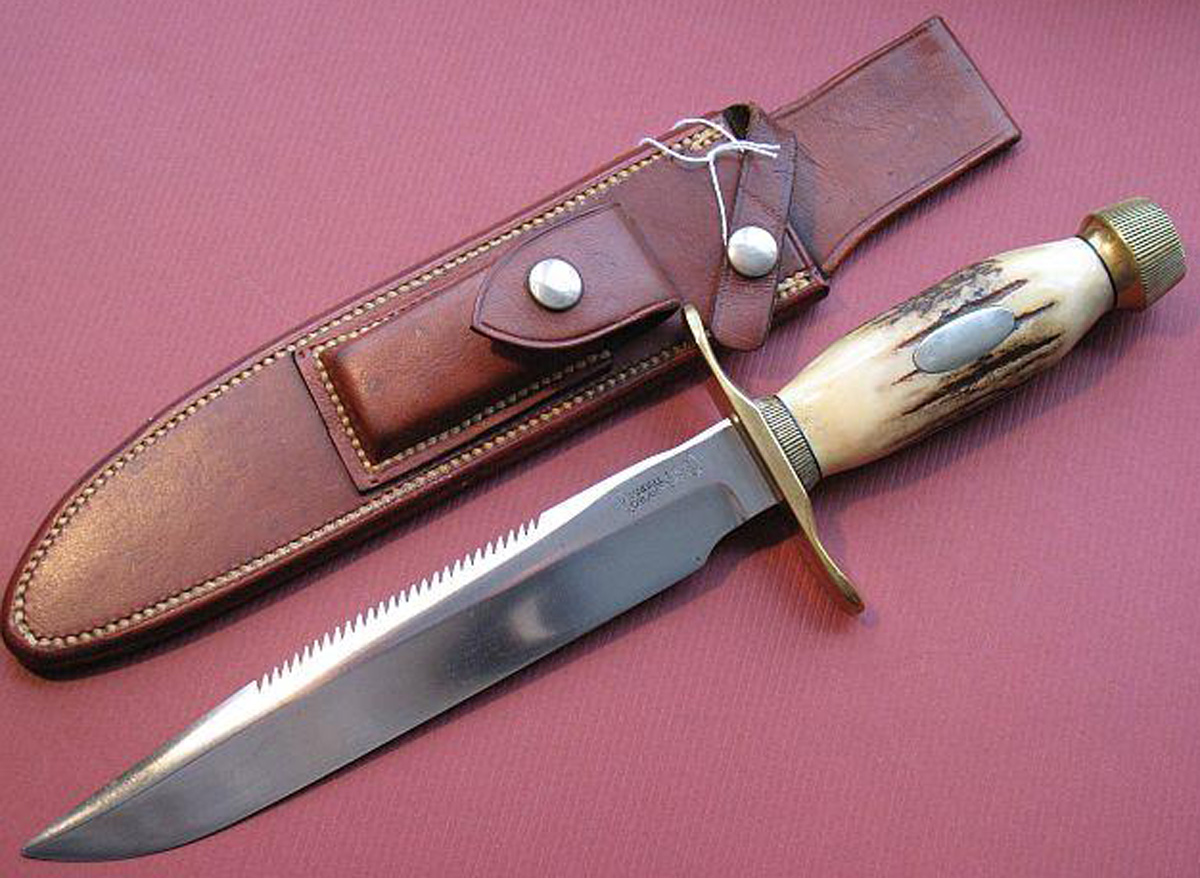
Model 1-8, mid 1960s carbon blade with teeth
Before the Vietnam era, Randall made almost all his knives out of O-1 Swedish carbon tool steel which was famous for edge holding. However, early on in Vietnam, reports from the field noted that tool steel would rust and pit at an amazing rate in that humid environment resulting in a knife that looked like this in one month.
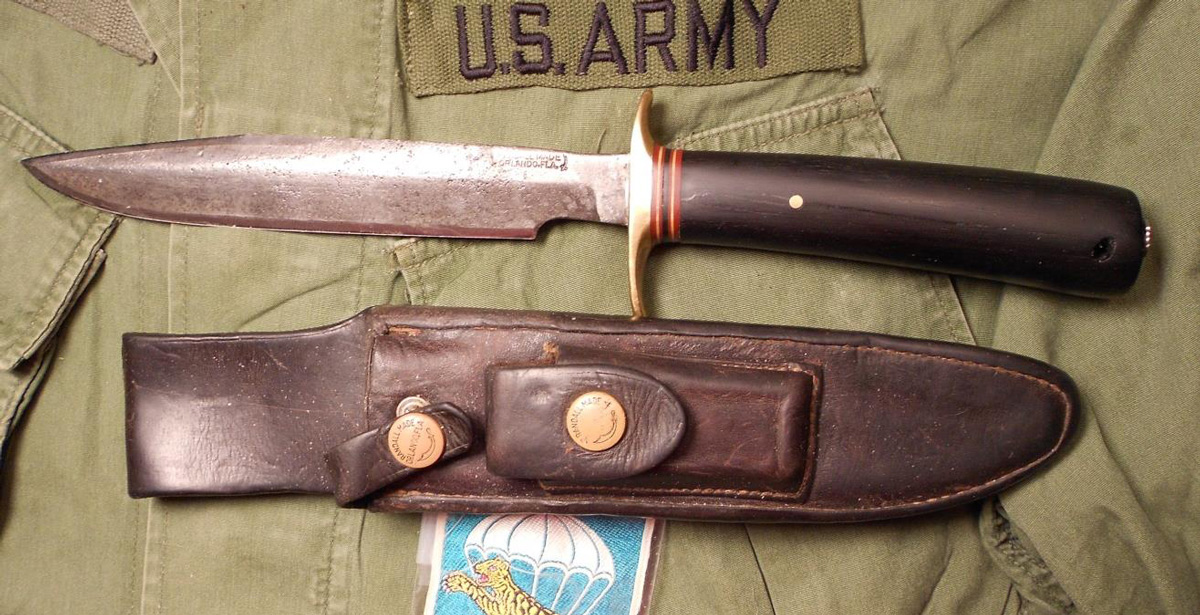
Model 1-7, carbon steel, about 1960, carried in Laos and Vietnam.
This led to the explosive popularity of stainless steel as a blade material. Use of stainless steel by Randall increased every year until ultimately about 70 percent of the blades sent to Vietnam were made of that material. Randall stamped his stainless blades with an “S” near the blade stamp. The location of that “S” is important to collectors, but of course we didn’t know about that at the time, and it does not change the usefulness of the knife.
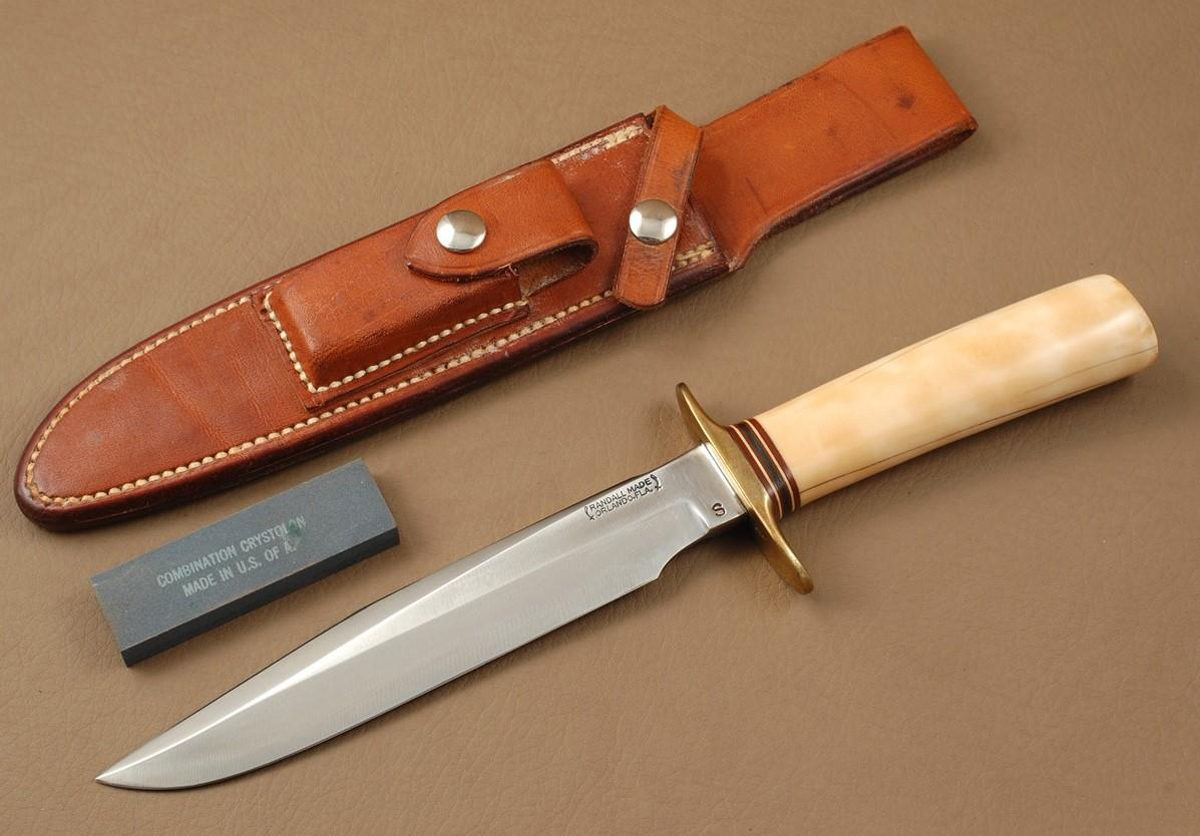
Model 1-7 APFK stainless steel, ivory handle
Randall Model 2 – Fighting Stiletto
The model 2 is one of Randall’s oldest combat designs based on the famous Sykes-Fairburn design, and was especially popular during Korea. This model was carried in Vietnam but not as frequently encountered because it was less useful for mundane tasks such as making pungi stakes, opening rations, digging an emergency hole, etc.
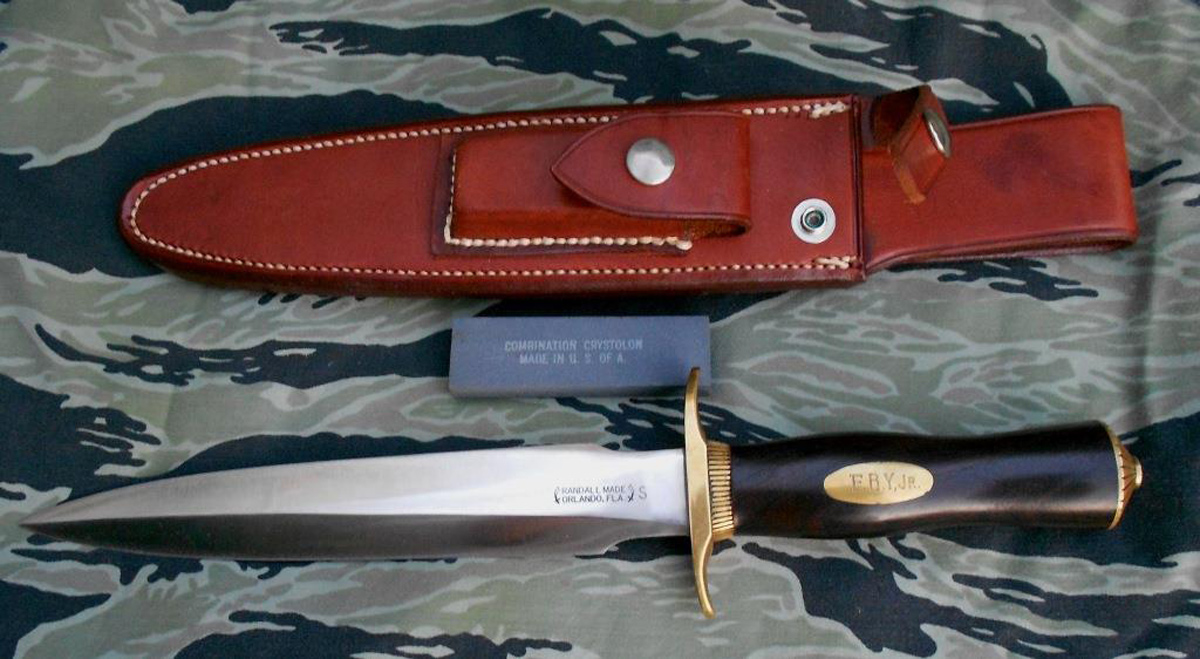
Model 2-8, carbon steel, late 1960s
Randall Model 14 – Attack
This full-tang, heavy duty almost indestructible knife with its 7 ½-in blade became the combat knife of first choice during the Vietnam era, so much so that it is now regarded as the iconic knife of Vietnam. Randall made this knife of either O-1 carbon steel or stainless, and it could be had with the back of the blade equipped with teeth, supposedly to help saw through helicopter skin.
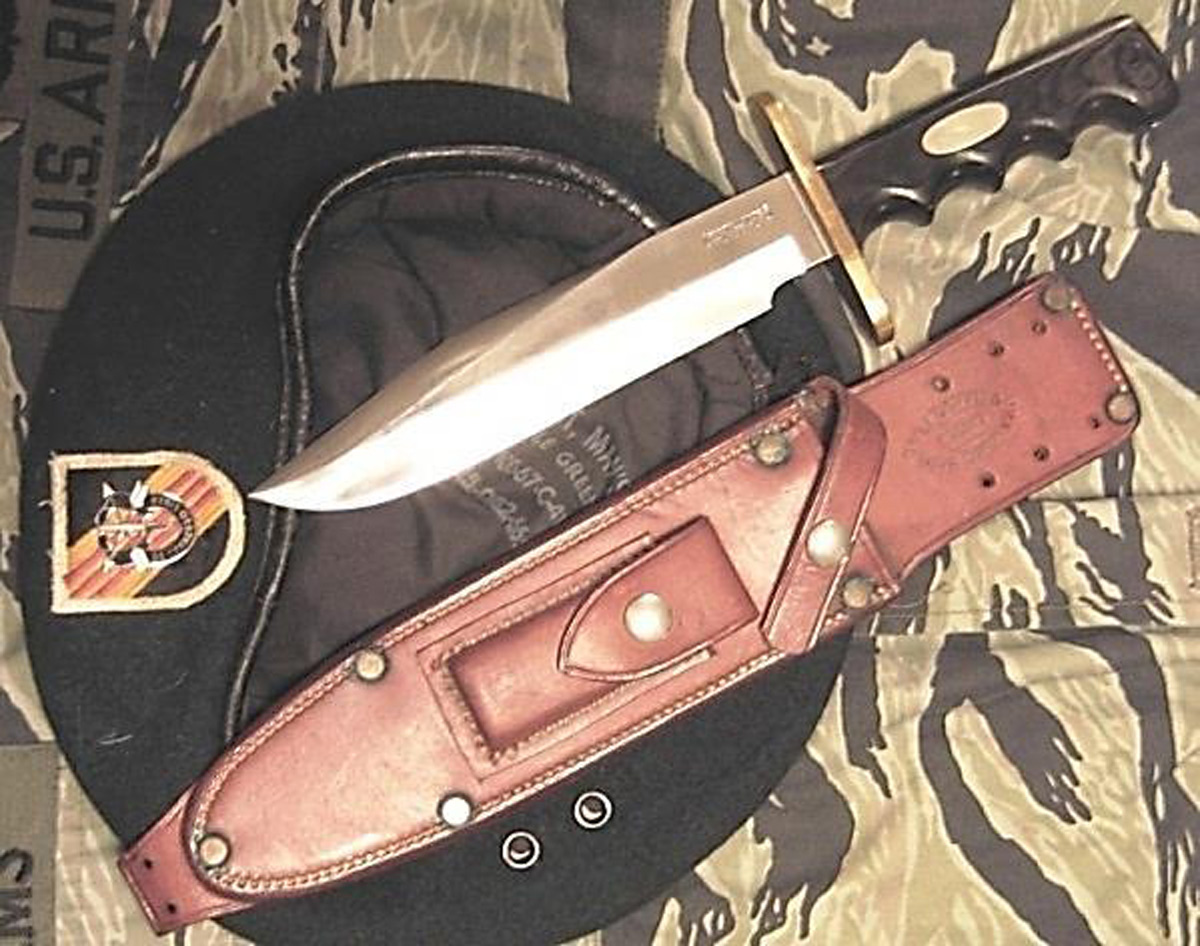
Model 14, Orlando made, carbon steel blade, late 1960s
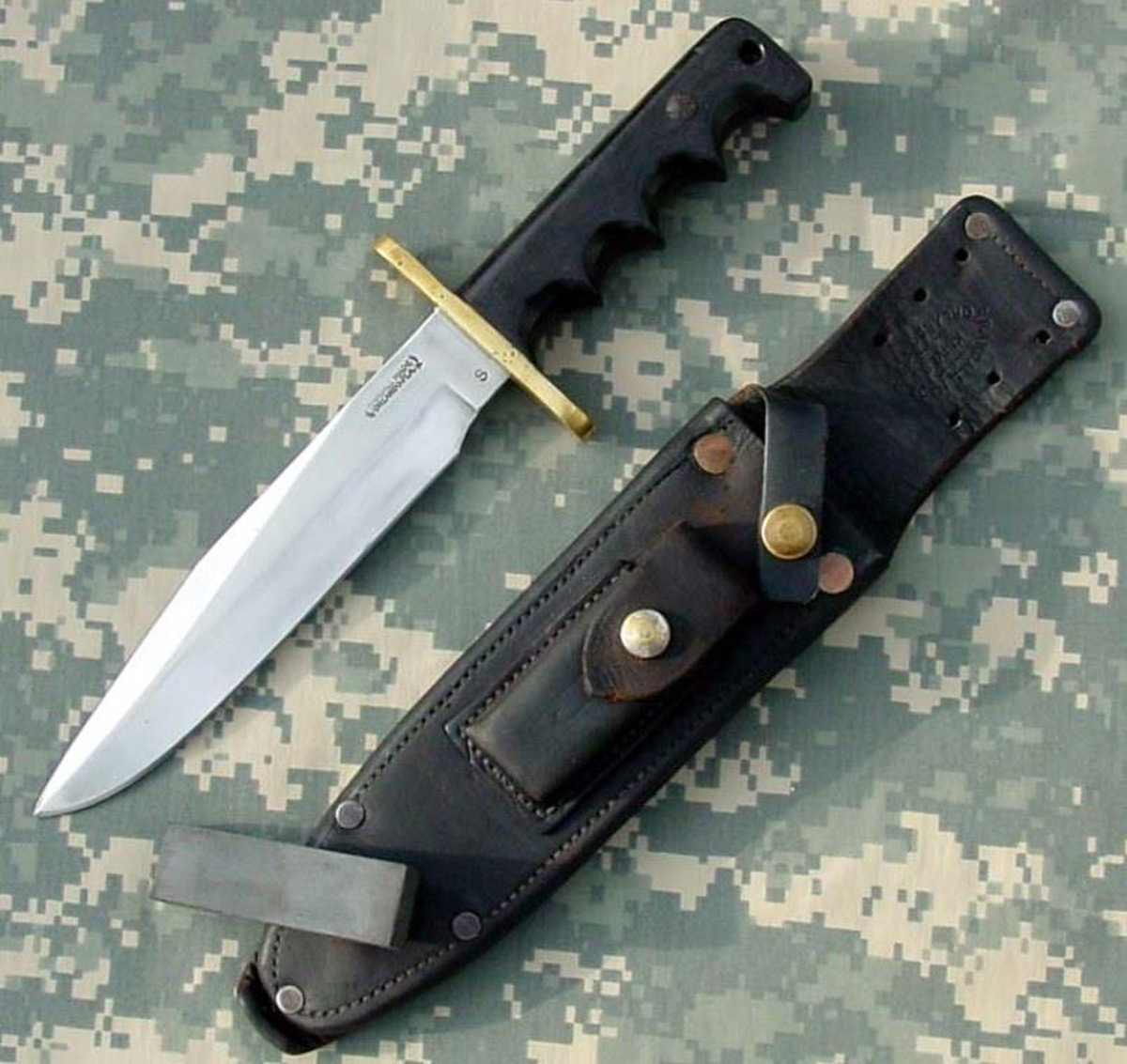
Model 14, Orlando made, stainless steel blade, about 1965. Documented carried by Marine in Vietnam, 1966, and by son in Kuwait, 1991
By 1966 the wait time for a Randall made in his Orlando shop was over one year. Therefore, Randall began importing rough-forged Model 14 blades made by Solingen in Germany. His shop then finished those blades, handled and sold them to the GIs going to Vietnam for a cheaper price. These became very popular because of they were less expensive and could be had quickly.
These blades were marked “Solingen” and though they were less expensive than the “Orlando-made” knives during the Vietnam era, they are now highly regarded by collectors. The Randall Solingen blades came with or without teeth, in both carbon and stainless steels, though most were made of stainless.
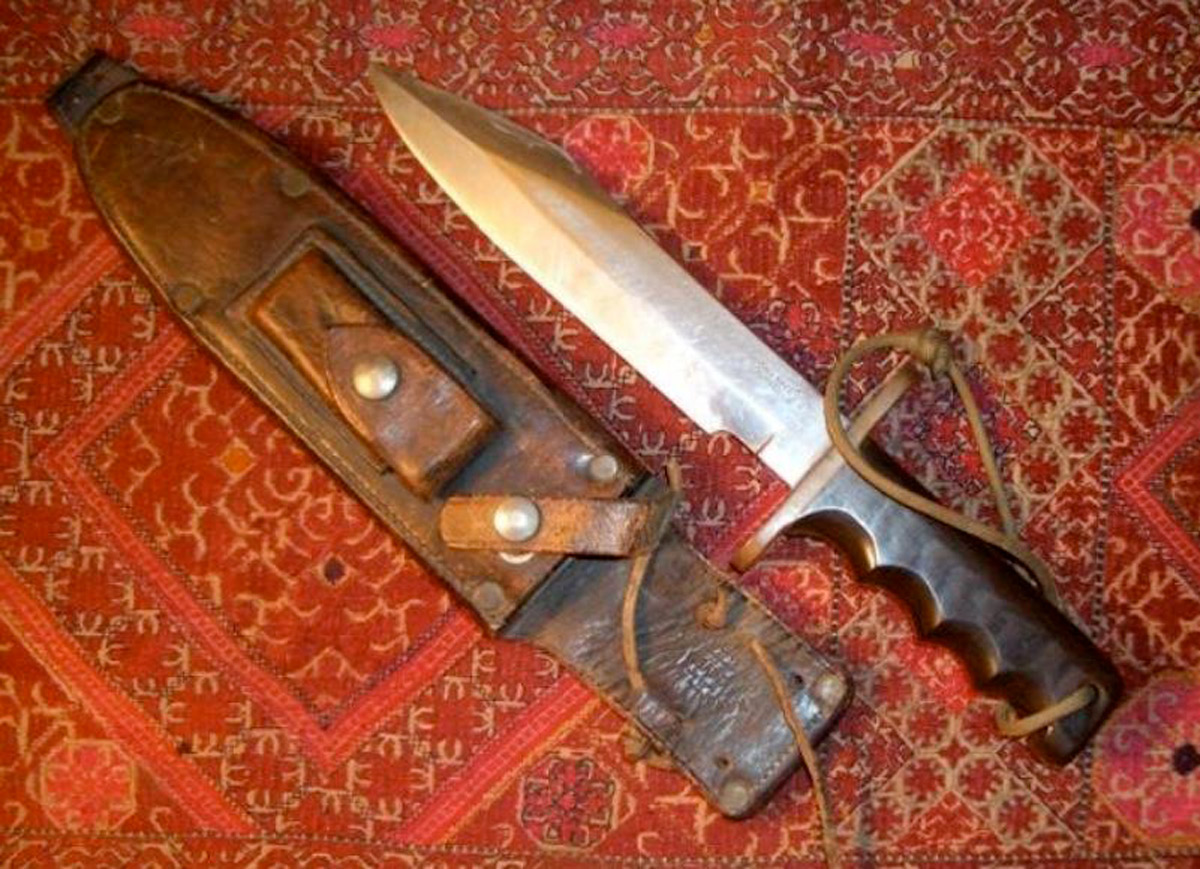
Model 14 Solingen stainless, 1967, documented MACV-SOG carried, 1968
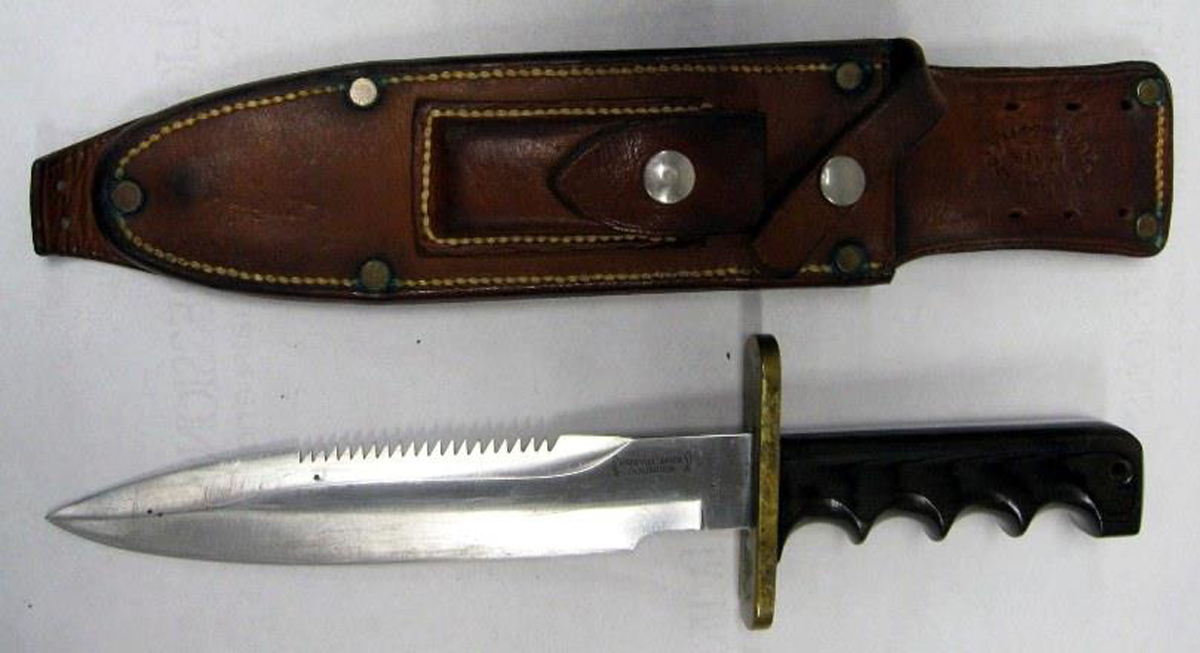
Model 14 Solingen stainless with teeth, about 1966
Randall Model 18 – Attack Survival
This model was introduced by Randall in 1963 and rapidly became one of the most popular knives ordered by Vietnam bound troops. The knives used “Orlando made” and “Solingen-made” blades adapted from models 14 and 15. However the handle of the 18 was made of a hollow tube that could contain survival items such as fish hooks, Dexedrine pills, matches, etc. The grip was left bare so that the owner could wrap it with fish line, leather strips, rope, twine – materials useful in a survival situation. Model 18 knives made during the Vietnam era had the hollow end covered by a rubber cap called a crutch-tip.
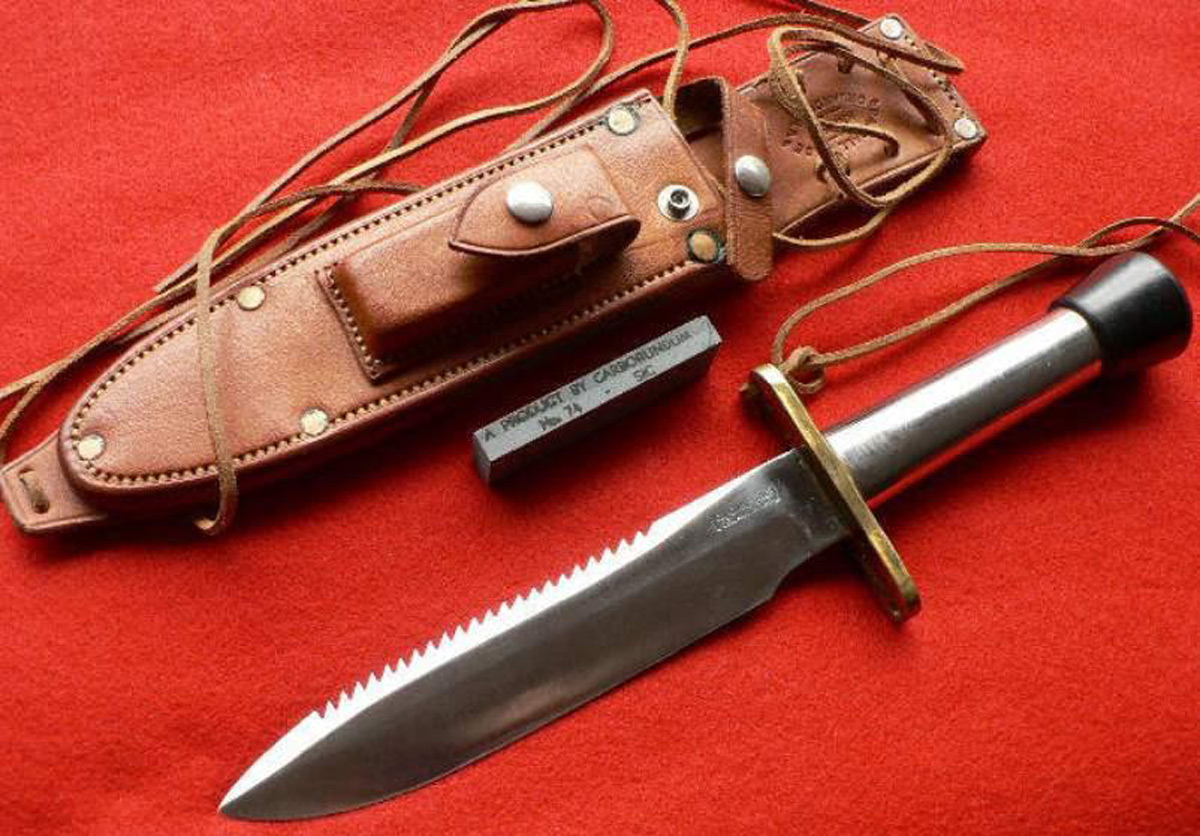
Model 18 7.5-in stainless blade, about 1967
Notice that the sheaths for Models 14, 15, and 18s knives of the Vietnam era have rivets of various types. After 1972-73 or so, this sheath construction feature was discontinued. The model 1 and model 2s of the war era usually had a sheath without rivets, but had some other specific identifiable features, as did the knives themselves.
In addition to the change in sheath construction, beginning about 1973, Model 14 and 15 featured a bronze insert lining the thong hole in the handle unlike earlier blades.
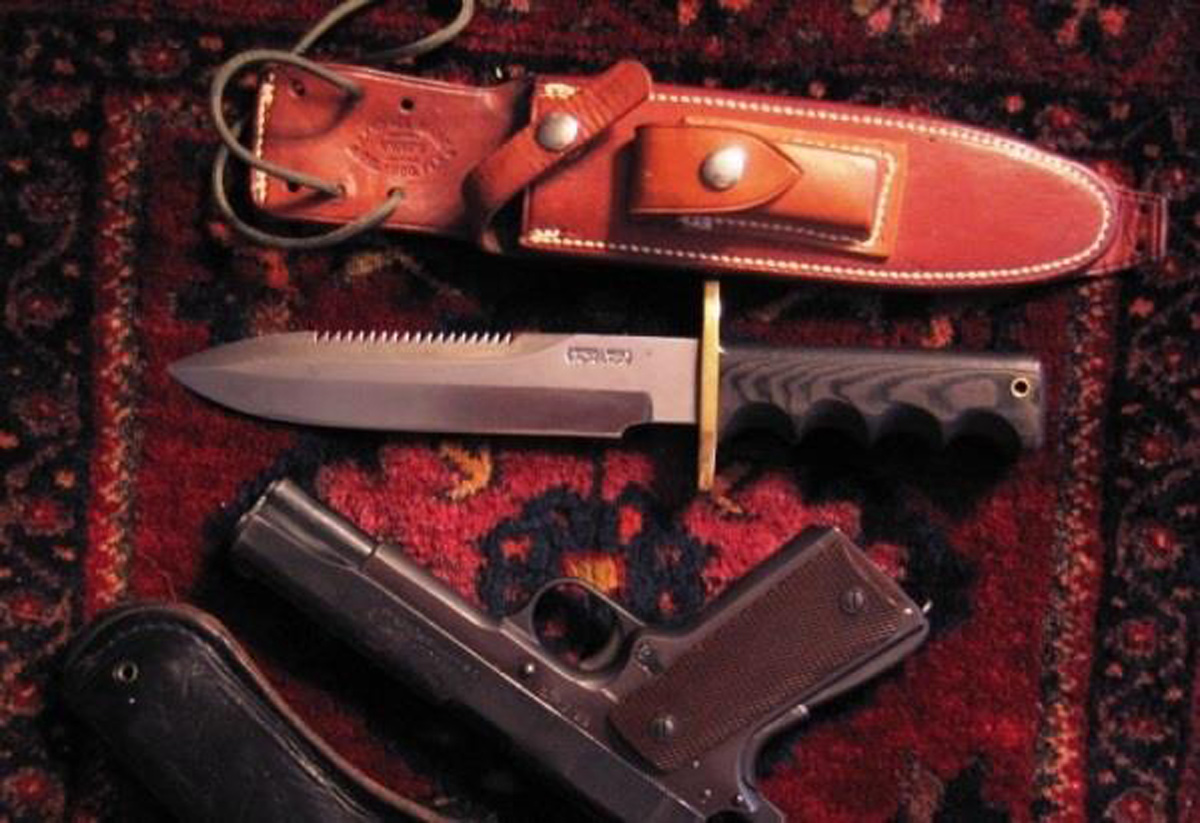
Model 14, Orlando blade, carbon steel, documented 1973. Note brass lined thong hole and sheath sans-rivets.
A genuine Vietnam era knife is sought after by collectors and prices can be at a premium. As a result, should one desire to purchase an authentic Randall Vietnam era artifact, it would be best to consult with an expert to avoid fakes and con men.
Perhaps because of the amount of equipment carried, the modern soldier seems prefer to carry a folding knife. However, the beauty and usefulness of a newly made Randall fixed blade knife remains a constant.
Today, there are swarms of different types of high quality fixed blade knives available. But for those with an appreciation of history, there is only one premiere knife with an unbroken military pedigree stretching back to the dawn of the Airborne and the beginning of Special Forces … the Randall
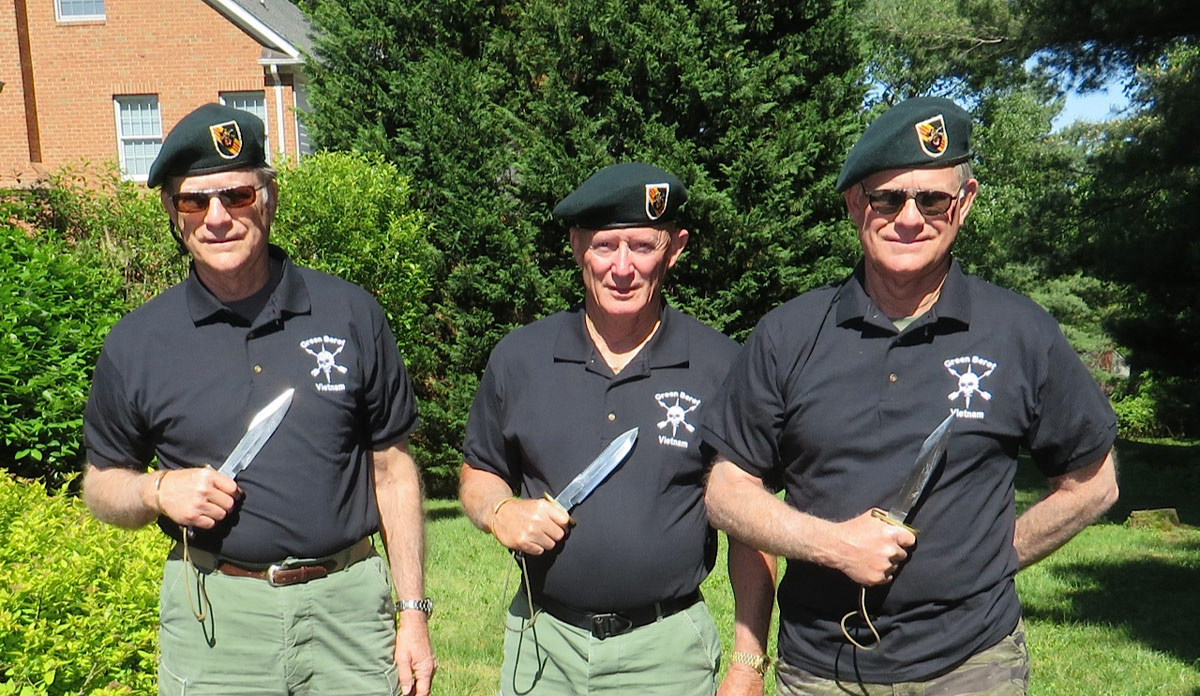
Left to right, Gene Williams, Lonny Holmes, and Jack Williams holding Vietnam-era Randall knives.
ABOUT THE AUTHOR
Jack Williams , a former SF 051B (commo for the young SF) who served in the 5th Special Forces Group (Airborne) in Vietnam at Ben Het and Dak To in II Corps in 1968, comes from a military family with a history dating back to the War of 1812. His father, Lt. Gene Williams, was a Pathfinder in the 82nd Airborne Division, 508th PIR, and jumped into Normandy on D-Day. Unfortunately, he was killed in action on June 20, 1944, before he could receive the message that he was the father of twin sons. After discharge from the army, he completed his education, ultimately graduating with two master’s degrees in engineering. In his service, Jack carried a Randall knife, and in the years since, he has become a collector and a U.S. expert on Randalls of the Vietnam era and has written extensively regarding these custom knives.
A friend of former Sentinel editor Lonny Holmes since their days at Fort Bragg, N.C., in late 1965–1966, Jack has been a significant contributor to the Sentinel. In addition to this article, the following articles have been published in past issues:
December 2015 — “Tracking Down A Hero; the story of SGM James O. Schmidt” by Gene and Jack Williams
April 2017 — “The Last Pathfinder Company is History: Long Live History!”
September 2017 — “Hal Moore and the Randall Knife“
August 2019 — “D-Day 75th Anniversary: A Normandy Experience”
BRAVO!!
I’ve had a Randall Model 14 (Solingen) since Oct/Nov ’70 @ Dak Pek A-242. I bought a Model18 for 1LT Adams, new XO, as he was on orders to go to CCN. ‘Never saw, nor heard of him later. I bought a Model 14 (non-solingen) after my move to New Braunfels,TX in Nov 2017 – then couldn’t part with my original Model 14…why I donated my Yarborough Knife to a Gold Star young boy who lost his dad in Afghanistan (10th group) DOL.
Great article! I would remind one of John Ek’s knives though, I believe they share a similar pedigree going back to WWII.
Thank you.
Two very minor points: First, the model 2-8 shown above has the S stamp, so is stainless and not carbon steel as the caption states. Second, Solingen is a cutlery town in Germany, so “…made BY Solingen in Germany” makes it sound as if Solingen were a manufacturer, which it is not.